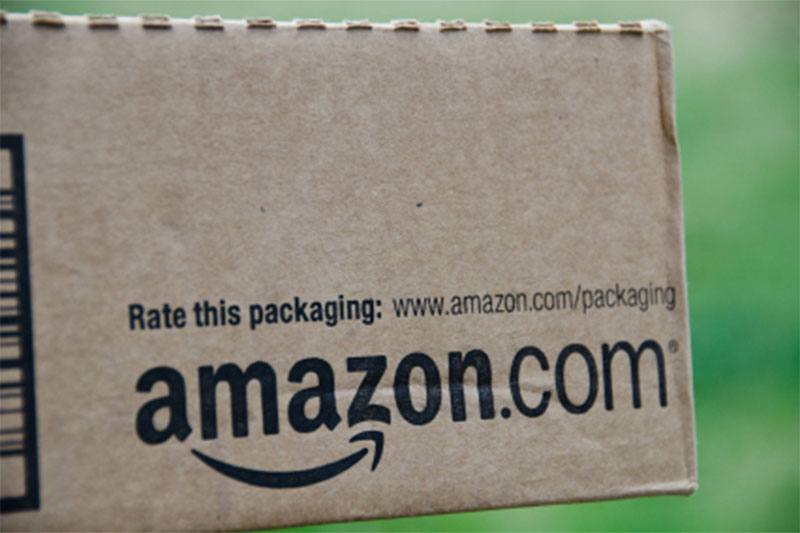By Nat Rudarakanchana - Amazon.com, Inc. (NASDAQ:AMZN) specialist and ChannelAdvisor CEO Scot Wingo told retailers at New York industry trade show that they needed a plan for working with or against the e-commerce giant, after presenting a startling portrait of Amazon’s ambitions and growth to date.
Wingo estimated that Amazon owns 46 U.S. warehouses already – or in Amazon jargon ‘fulfilment centers’ – with eight under construction. The Seattle, WA-based giant owns 102 warehouses either built or now under construction in total internationally, he added.
That’s a significantly higher total than what other industry analysts and retailers have estimated, according to Wingo, who has studied Amazon since 2000 and who advises retailers on how to sell their wares on Amazon’s third party marketplace. ChannelAdvisor publishes widely watched e-commerce sales data comparing Amazon and eBay Inc (NASDAQ:EBAY) sales, alongside sales derived from Google Shopping (NASDAQ:GOOG) or search engine results.
Amazon doesn’t typically specify how many warehouses they own, though their executives consistently pinpoint this as an area for further investment. Analysts believe that the company has ploughed much of its revenue into expanding its distribution network in recent years.
Amazon has systematically placed its U.S. warehouses within 100 miles of densely populated metropolitan areas, said Wingo, who has overlaid census data to suspected or known Amazon sites.
Small retailers could simply join Amazon and use their successful marketplace, which broke records in 2013, said Wingo. They could try to beat Amazon at their own game on scale and shipping logistics, though Amazon tends to acquire smaller rivals it sees as competitors, he added, citing shoe seller Zappos.com and diapers.com.
Certain international markets, where Amazon has yet to make a strong impression, could be fruitful areas for global retailers, he continued. Brazil, India and Russia are candidates for those markets. Russia’s e-commerce market has been seen as especially promising, though India’s market is dominated by homegrown marketplace Snapdeal. About 60 percent of Amazon’s revenue comes from its domestic U.S. market.
Social media and mobile commerce are two other frontiers where retailers can at least keep pace with Amazon, said Wingo.
But one clear option is to partner with Amazon’s large rivals, like Google or eBay. eBay in particular has offered same-day local delivery via eBay Now, a nut Amazon has yet to crack, alongside in-store pickup partnerships with Best Buy Co., Inc. (NYSE:BBY) and AutoZone, Inc. (NYSE:AZO).
Upstairs at the National Retail Federation’s 2014 Big Show, where Wingo presented, eBay representatives enticed retailers with their products, explaining how they could boost online traffic and sales and cater to shoppers demanding delivery.
There aren’t regular official metrics on these eBay initiatives yet, which both rolled out in August 2012. eBay is expected to roll out its delivery service, seen as an e-commerce challenge to Amazon, to 25 cities in 2014, however, up from its handful of cities currently.
Google Shopping’s product listing ads, on the other hand, an alternative to text-only Google Ad Words has experienced explosive growth since its introduction. Even eBay invested heavily in Google Shopping marketing over the holiday season 2013, wrote Wingo in an earlier blogpost.
“Amazon has raised the bar so high – everyone else is trying rapidly to catch up to what they’re doing, and trying even to outflank them,” Wingo said in his speech, citing renewed e-commerce interest from major tech companies like Google, or defensive moves on cloud computing by companies like International Business Machines Corp. (NYSE:IBM).
Many companies, including international giants like the UK’s Tesco PLC (LON:TSCO) or Japan’s Rakuten Inc (TYO:4755) have also opened marketplaces where small businesses and individuals can sell their wares, imitating Amazon’s immensely profitable 2006 tactic.
“We’re all in this war that Amazon is kind of raising the stakes on, and it’s an arms race,” he said. In his talk, Wingo underlined Amazon’s entry into low profit margin industries, like groceries with its AmazonFresh service, with its willingness to swallow narrower profit margins relative to competitors.
Amazon’s growing empire, which includes business-to-business sales of industrial wares (Amazon Supply), advertising products (Amazon Product Ads) and even lending for its vendors (Amazon Lending), may not comfort your average brick-and-mortar retailer much.
Oddly, Rick Caurso, CEO of shopping mall operator Caruso Affiliated, opened the retail conference on Sunday by telling retailers that the traditional American mall is “dead”, and must be seriously re-invented.
“I’ve come to the conclusion that within 10-15 years the typical U.S. mall, unless completely reinvented, will be seen as a historical anachronism,” Caruso said in a keynote speech, according to a news release.
Amazon is expected to report its quarterly and full year results in coming weeks. UBS AG (VTX:UBSN) analysts upped their price target for the share from $400 to $465 on Jan. 13, citing strong Kindle Fire HDX tablet sales, strong Amazon Prime membership and a bright 2014. They expect Amazon’s North American revenue to grow 27 percent for the quarter to $15.5 billion and its international revenue to grow 18 percent from last year.
